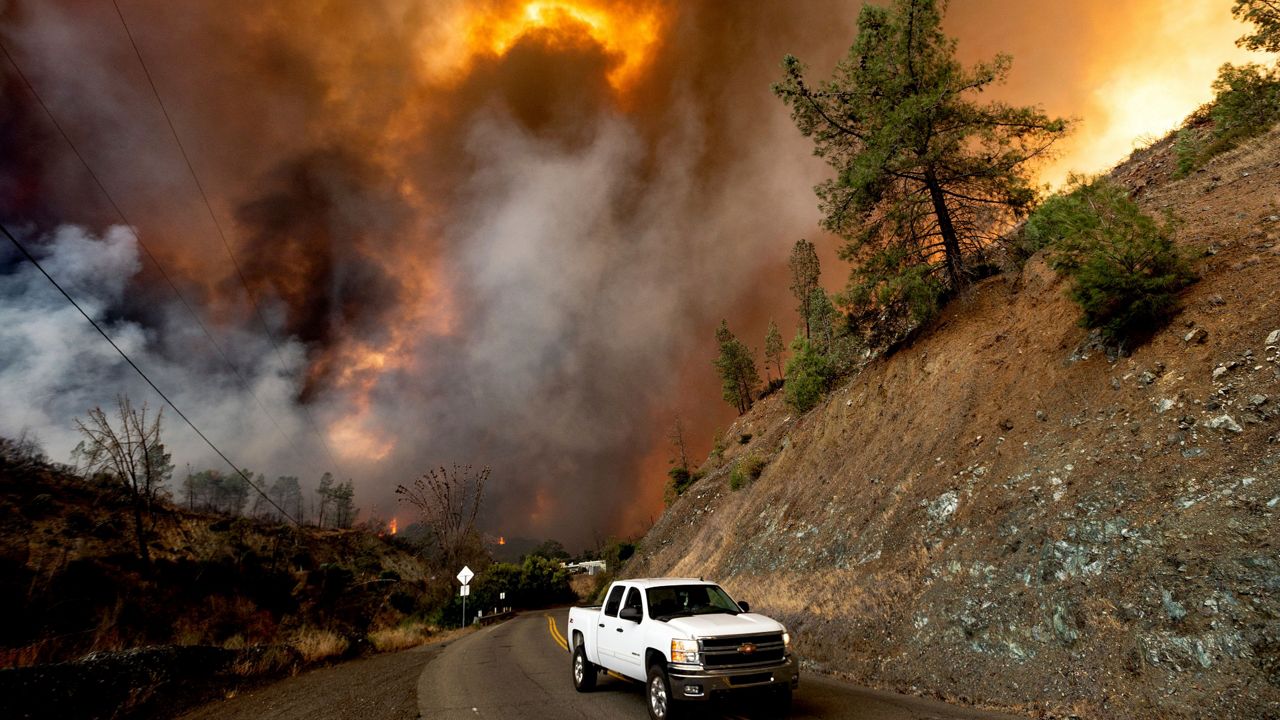Fires are becoming a constant part of California living and the wildfires so far this year have proven to be very unpredictable, another reason why being prepared is a crucial step.
Now that your home is well-defended, and you have your family’s wildfire action plan and evacuation supply kit in place, you should be fully prepared to hit the go button as soon as a wildfire approaches.
During peak fire season months, it’s important that you follow the weather forecasts and pay attention to alerts such as a red flag warning, especially if you live in wildfire-prone areas such as the mountains or nearby foothills. When a wildfire breaks out close to you, it should not come as a surprise.
Follow the direction of fire and law enforcement, but it’s also important to understand that emergency personnel may not always be able to notify every single person. Most counties have some sort of emergency notification system that can alert you by voice or text message if you are within an affected area.
Again, this is not always guaranteed, so it’s up to you to take the initiative to stay informed by monitoring news and social media outlets for new information, then taking action based on those updates. Make sure you monitor the wildfire activity, know the emergency response plan for your community, and where the nearest evacuation centers are.
If an evacuation warning is issued for your area, it means there is a potential threat to life and property. This is the time to do any last minute preparations and leave if you need extra time to evacuate your family and pets.
If an evacuation order is issued, this means that there is immediate threat to life and property - evacuation is necessary at that moment.
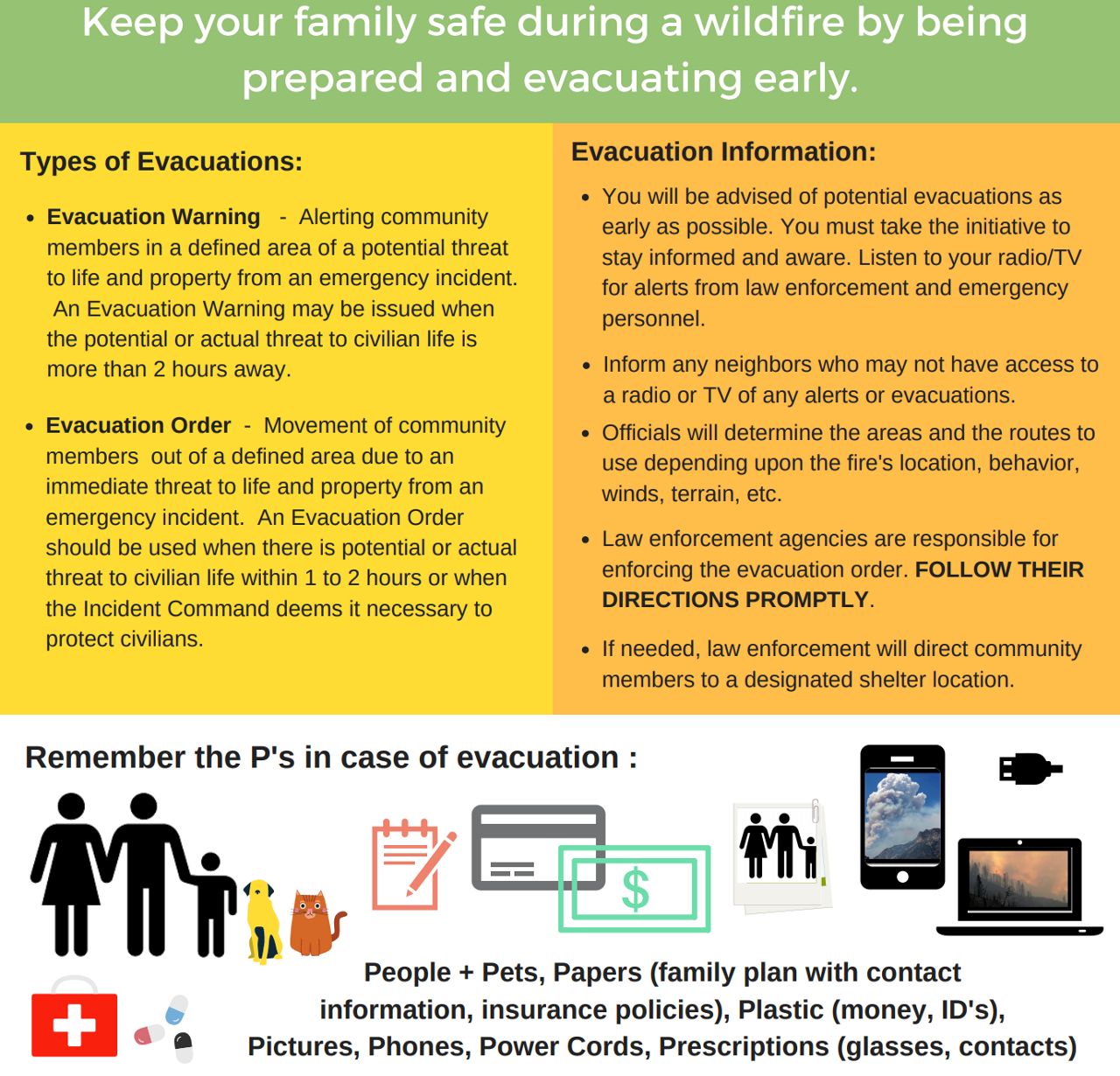
If a fire is forecast to spread in the direction of your home, it’s best to follow your wildfire action plan and go as early as possible to relocate away from the affected area. When you leave early, you give yourself and your family the best chance of survival.
Too many times I have seen footage of people trying to hose down their own property as the fire is coming right up to it, and that is the worst thing to do in that instant.
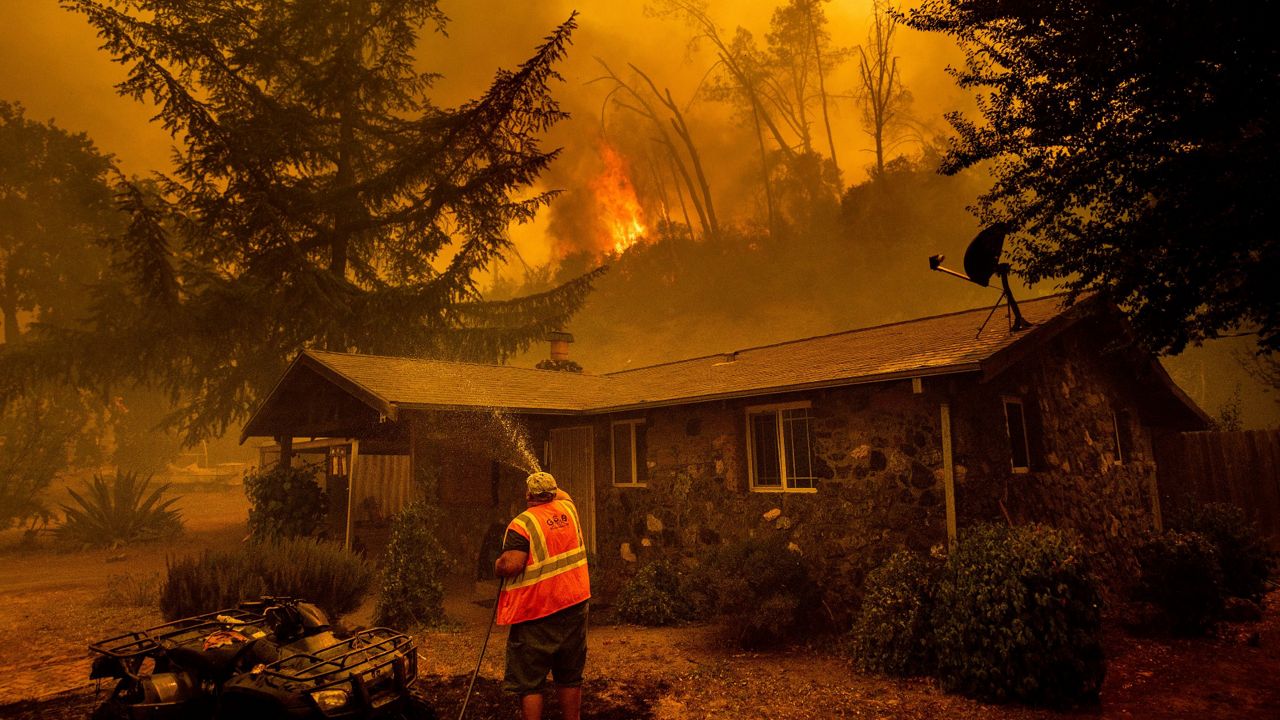
Instead, follow the guidelines early on to protect your home. That will make you feel more secure about leaving your house while a wildfire is burning in the region.
Once an evacuation warning is issued, the first thing to do is grab your evacuation supply kit, which should already be easily accessible, and pack it into the car. This should include key items, supplies, and valuables, including the six "P’s."
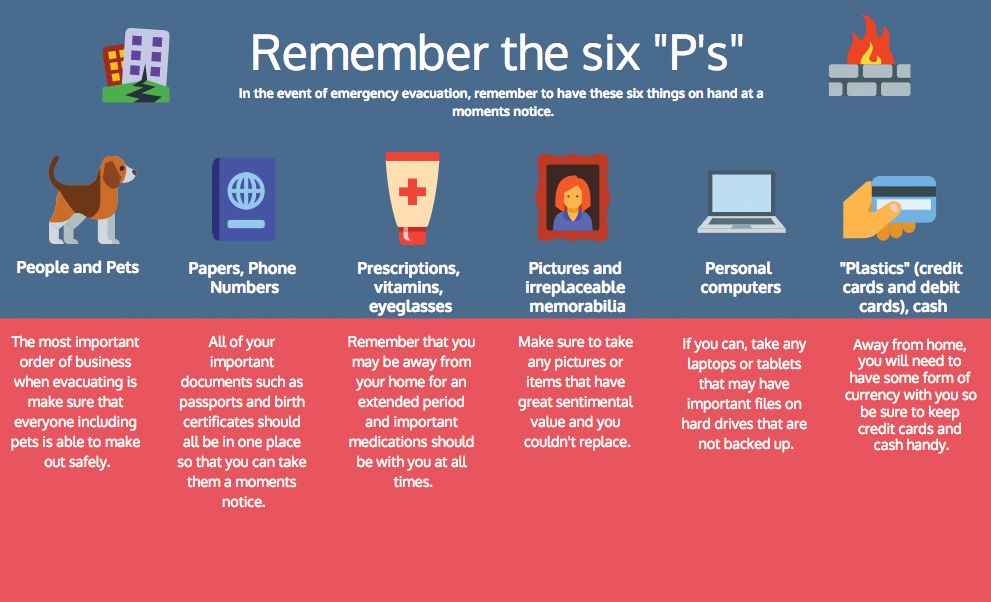
If you feel threatened by a fire, leaving early is a good option, before an evacuation order is even issued, and you will most likely avoid any traffic delays.
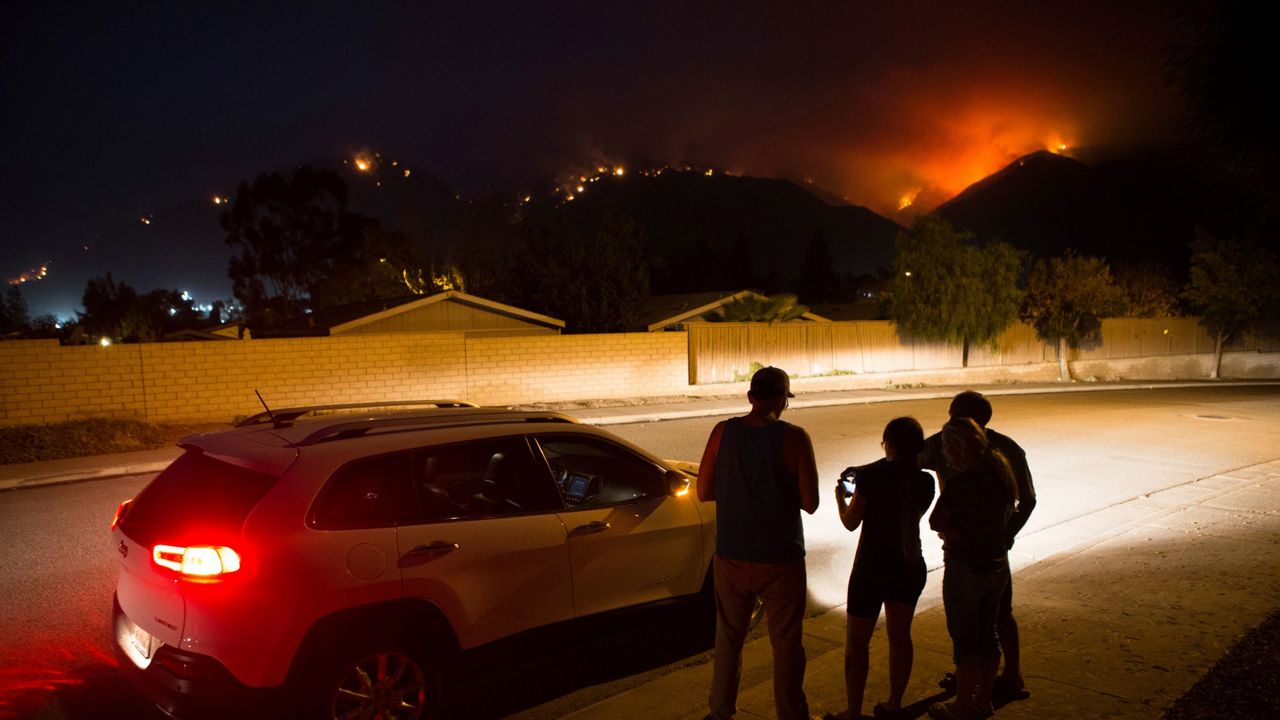
If you decide to wait for mandatory evacuation orders, you may have some time to further prepare before leaving. There are plenty of steps you can cover to make sure everything is squared away in case that fire does come right up to your home.
Let's start with securing your home on the outside. You should move all flammable items away from the house.
This includes any outdoor furniture (even cushions), door mats, or plants potted in wooden containers. You will also want to move barbecues and propane tanks, wood piles, tarp coverings, toys, and cardboard or other recyclable items just sitting around.
Move them as far from the exterior of the house as you can (preferably at least 30 feet away), or bring other ones (like the patio furniture) inside the home.
Clean leaves and other litter off your lawn, roof, and home exterior. Your goal is to minimize possible ignition sources.
Connect garden hoses to water faucets outdoors. From there, you can fill the pool and hot tub if they are not already full. Take any available garbage cans, tubs, or large containers and also fill them with water. Firefighters can use these outdoor water sources if needed.
Cal Fire recommends that you do not leave sprinklers on or water running, since can affect water pressure.
They also recommend that you seal attic and ground vents with pre-cut plywood or commercial seals.
If you have a large ladder, prop it up outside your house to give firefighters easy access to the roof and upper levels. You may also want to pull the hose out where firefighters can see it.
Turn on all home exterior lights to help firefighters recognize your home at night or under smoky conditions.
In times like these, they have to make tough decisions about saving homes from the impending fire. Your goal is to make your home the easiest and safest for firefighters to protect.
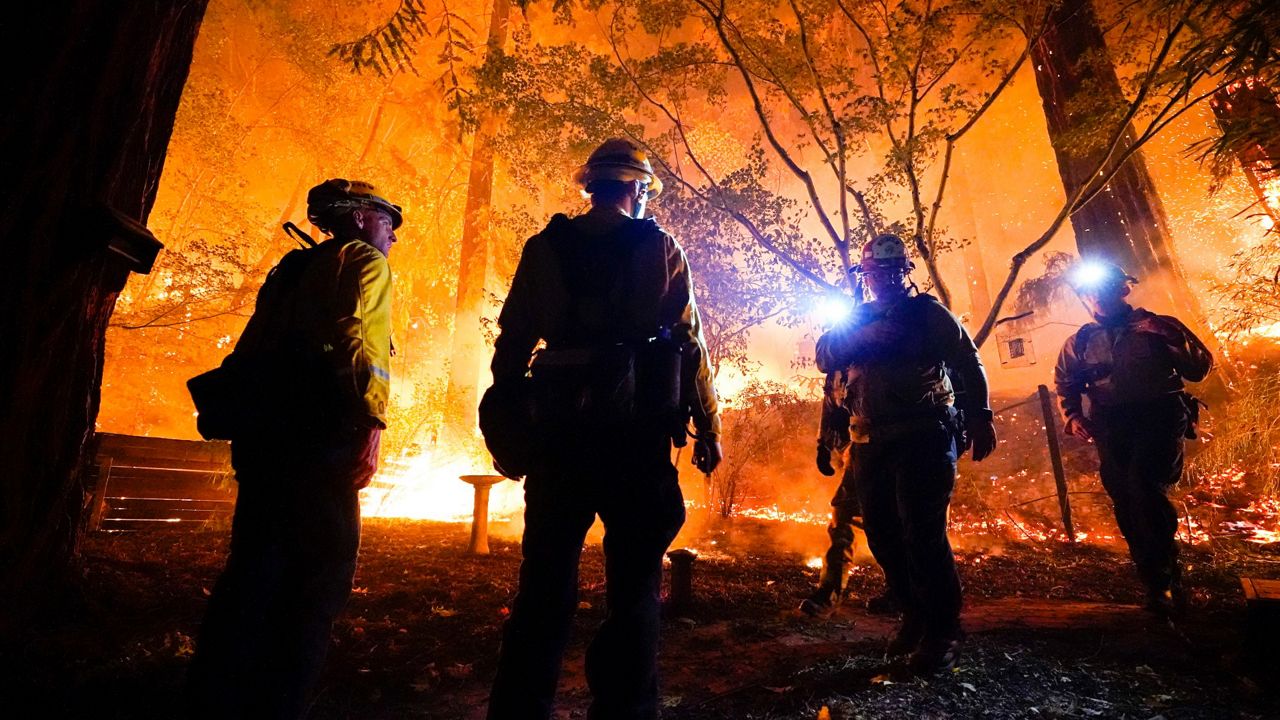
First and foremost, you want to make sure everyone in your family is ready to go with the evacuation plan. Go over the main and backup evacuation routes and make sure all roads are accessible.
Close all windows, exterior and interior doors (attic, basement, pet, and garage) and vents to prevent any drafts and embers from entering your home.
Remove flammable curtains, shades or shutters away from windows. Move any furniture away from windows and doors, as well, and place them in the center of the room.
Shut off propane or gas, pilot lights, and any heat or air conditioning units, including ceiling fans.
Leave lights on in every room in the house (along with the outdoors lights).
It would not be a bad idea to also take pictures and videos of the home exterior and items inside before you leave. This could come in handy for insurance purposes if your home does end up with fire damage.
Here are a few other extra tips for preparing under an evacuation warning:
- Make sure cell phones stay fully charged
- Fill up your car with gas or make sure the gas tank is at least half full
- Keep shoes and clothes near your bed in case you need to quickly evacuate during the overnight hours
- In case power goes out, you should be able to manually open automatic gates or garage doors - better yet, pull your cars out of your garage and keep them in the driveway
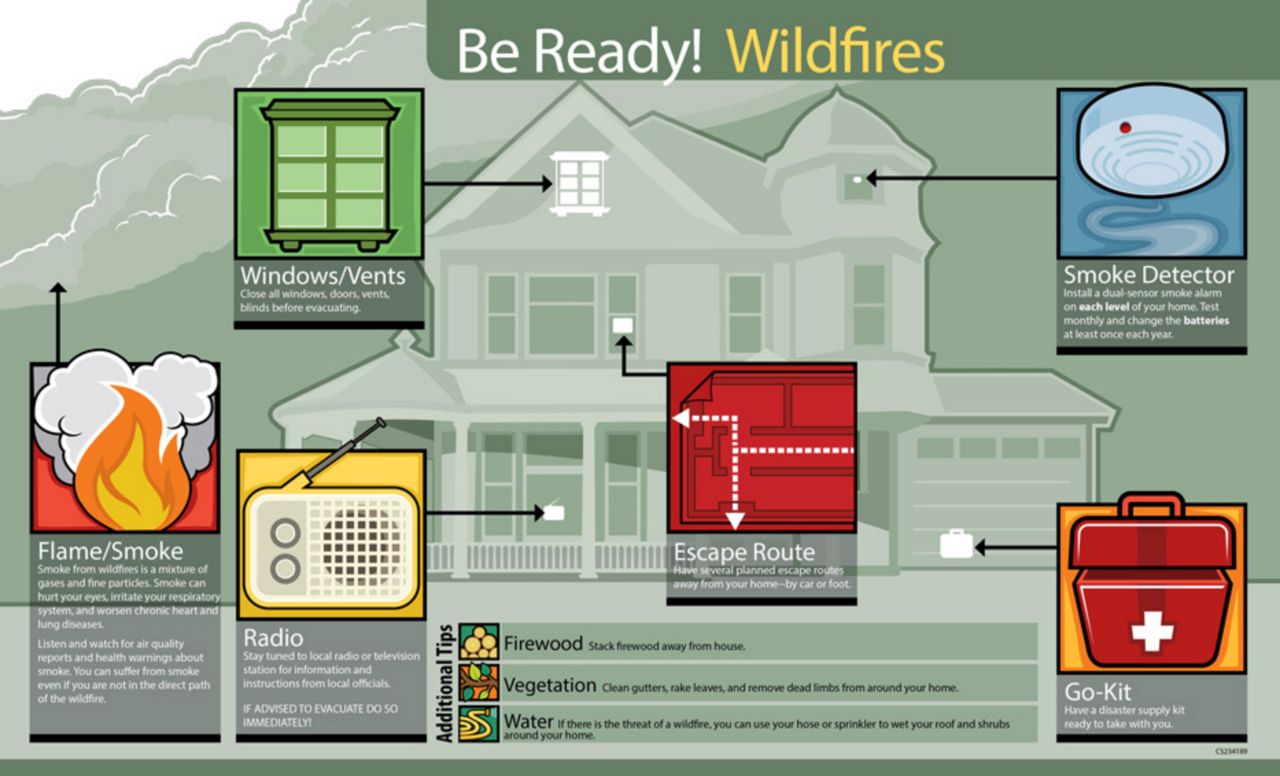
These are all steps you can take to give your home the best chance of survival if you do need to evacuate. Remember, these items should only be taken care of if you have time - the number one priority is getting yourself and your loved ones to safety.
When an evacuation order is issued, this means go time - do not delay! Your house is hopefully fully defended at this point and your evacuation supply kit should already be in the car. If not, this is the time to grab and pack it, along with your animals.
Once you have loaded the car, you will want to quickly change into clothes that can withstand fire conditions, including the impacts of high temperatures, smoke, or ash.
Cal Fire recommends choosing clothes with natural fibers like 100% cotton or wool - long pants, long sleeve shirt, and heavy shoes or boots. They also suggest bringing a hat or other head protection, a bandana or scarf to cover your face (an N95 mask would be best if you have one), leather gloves, along with goggles and/or glasses.
At this point, it’s time to hit the road with all family members, taking the routes you planned out ahead of time, assuming all roadways are accessible.
Have someone in your car help navigate and monitor road and fire conditions on their phone. You will most likely come across law enforcement/emergency personnel at some point and they can further assist and direct you to a safe location.
You must follow instructions from emergency personnel, which includes remaining on designated routes. If for some reason you become trapped, stay in your vehicle and call 911.
Do not return to your home until fire officials approve that it is safe enough and they lift the evacuation warning/order.
For the remainder of this wildfire season and any upcoming ones, remember to plan, prepare, and stay aware. This will give you, your family, and your home the protection needed as wildfires continue to strike in California.



